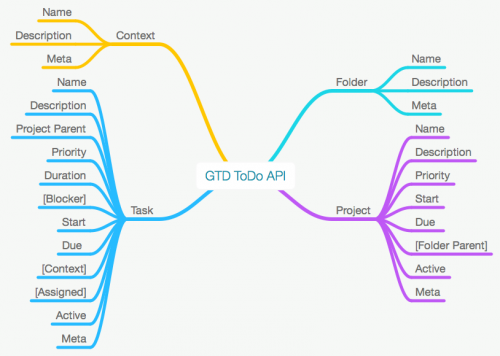Send With Confidence
Partner with the email service trusted by developers and marketers for time-savings, scalability, and delivery expertise.


Time to read: 5 minutes
 I love the idea of API Driven Development (ADD). It provides great flexibility and by default makes your app developer friendly from the beginning. The challenge is that it's hard to demo an API without an application tied to it. The goal of this post is to help you get past the API design and creation phase as quickly as possible, so you can focus on creating killer apps and encourage others to build upon your exposed data. This tutorial should be especially useful for hackathons and prototypes.
I love the idea of API Driven Development (ADD). It provides great flexibility and by default makes your app developer friendly from the beginning. The challenge is that it's hard to demo an API without an application tied to it. The goal of this post is to help you get past the API design and creation phase as quickly as possible, so you can focus on creating killer apps and encourage others to build upon your exposed data. This tutorial should be especially useful for hackathons and prototypes.

/folder
/project
/task
/context
Partner with the email service trusted by developers and marketers for time-savings, scalability, and delivery expertise.
| FORMAT: 1A | |
| HOST: http://api.gtdtodoapi.com | |
| # GTD TODO API | |
| This is an example API, written as a companion to a blog post at SendGrid.com | |
| ## Folder [/folder{id}] | |
| A single Folder object, it represents a single folder. | |
| Required attributes: | |
| - `id` Automatically assigned | |
| - `name` | |
| - `description` | |
| Optional attributes: | |
| - `parent` ID of folder that is the parent. Set to 0 if no parent | |
| - `meta` A catch-all attribute to add custom features | |
| + Parameters | |
| + id (required, int) ... Unique folder ID in the form of an integer | |
| + Model (application/hal+json) | |
| + Body | |
| { | |
| "id": 1, | |
| "name": "Health", | |
| "description": "This represents projects that are related to health" | |
| "parent": 0, | |
| "meta": "NULL" | |
| } | |
| ## Retrieve a single Folder [GET] | |
| + Response 200 (application/json) | |
| [Folder][] | |
| + Response 404 (application/json) | |
| { | |
| "error": "Resource not found" | |
| } | |
| ### Edit a Folder [PATCH] | |
| + Request (application/json) | |
| { | |
| "description": "A collection of health related projects", | |
| } | |
| + Response 200 | |
| [Folder][] | |
| + Response 404 | |
| { | |
| "error": "Resource not found" | |
| } | |
| + Response 400 | |
| { | |
| "error": "Resource modification failed" | |
| } | |
| ## Delete a Folder [DELETE] | |
| + Response 200 | |
| { | |
| "result": True | |
| } | |
| ## Create a Folder [POST] | |
| + Request (application/json) | |
| { | |
| "name": "Diet", | |
| "description": "A collection of projects related to Diet", | |
| "parent": 1 | |
| } | |
| + Response 201 | |
| [Folder][] | |
| + Response 400 | |
| { | |
| "error": "Resource modification failed" | |
| } | |
| # Folder Collection [/folder] | |
| Get all of the Folders. | |
| + Model (application/hal+json) | |
| + Body | |
| { | |
| "folders": [ | |
| { | |
| "id": 1, | |
| "name": "Health", | |
| "description": "This represents projects that are related to health" | |
| "parent": 0, | |
| "meta": "NULL" | |
| }, | |
| { | |
| "id": 1, | |
| "name": "Diet", | |
| "description": "A collection of projects related to Diet", | |
| "parent": 1, | |
| "meta": "NULL" | |
| } | |
| ] | |
| } | |
| ## List all Folders [GET] | |
| + Response 200 | |
| [Folder Collection][] |
| #!flask/bin/python | |
| from flask import Flask, jsonify, abort, make_response, request | |
| app = Flask(__name__) | |
| folders = [ | |
| { | |
| "id": 1, | |
| "name": "Health", | |
| "description": "This represents projects that are related to health", | |
| "parent": 0, | |
| "meta": "NULL" | |
| }, | |
| { | |
| "id": 2, | |
| "name": "Diet", | |
| "description": "A collection of projects related to Diet", | |
| "parent": 1, | |
| "meta": "NULL" | |
| } | |
| ] | |
| @app.route('/folder/<int:folder_id>', methods = ['GET']) | |
| def get_folder(folder_id): | |
| folder = filter(lambda t: t['id'] == folder_id, folders) | |
| if len(folder) == 0: | |
| abort(404) | |
| return jsonify( folder[0] ) | |
| @app.route('/folder', methods = ['GET']) | |
| def get_folders(): | |
| return jsonify( { 'folders': folders } ) | |
| @app.route('/folder', methods = ['POST']) | |
| def create_folder(): | |
| if (not request.json) or (not 'name' in request.json) or (not 'description' in request.json): | |
| abort(400) | |
| folder = { | |
| 'id': folders[-1]['id'] + 1, | |
| 'name': request.json['name'], | |
| 'description': request.json['description'], | |
| 'parent': request.json['parent'], | |
| 'meta': request.json.get('meta', "NULL") | |
| } | |
| folders.append(folder) | |
| return jsonify( folder ), 201 | |
| @app.route('/folder/<int:folder_id>', methods = ['PATCH']) | |
| def update_folder(folder_id): | |
| folder = filter(lambda t: t['id'] == folder_id, folders) | |
| if len(folder) == 0: | |
| abort(404) | |
| if not request.json: | |
| abort(400) | |
| if 'name' in request.json and type(request.json['name']) != unicode: | |
| abort(400) | |
| if 'description' in request.json and type(request.json['description']) is not unicode: | |
| abort(400) | |
| if 'parent' in request.json and type(request.json['parent']) is not int: | |
| abort(400) | |
| if 'meta' in request.json and type(request.json['meta']) is not str: | |
| abort(400) | |
| folder[0]['name'] = request.json.get('name', folder[0]['name']) | |
| folder[0]['description'] = request.json.get('description', folder[0]['description']) | |
| folder[0]['parent'] = request.json.get('parent', folder[0]['parent']) | |
| folder[0]['meta'] = request.json.get('meta', folder[0]['meta']) | |
| return jsonify( folder[0] ) | |
| @app.route('/folder/<int:folder_id>', methods = ['DELETE']) | |
| def delete_folder(folder_id): | |
| folder = filter(lambda t: t['id'] == folder_id, folders) | |
| if len(folder) == 0: | |
| abort(404) | |
| folders.remove(folder[0]) | |
| return jsonify( { "result": True } ) | |
| @app.errorhandler(404) | |
| def not_found(error): | |
| return make_response(jsonify( { "error": "Resource not found" } ), 404) | |
| @app.errorhandler(400) | |
| def create_failed(error): | |
| return make_response(jsonify( { "error": "Resource modification failed" } ), 400) | |
| if __name__ == '__main__': | |
| app.run(debug = True) |